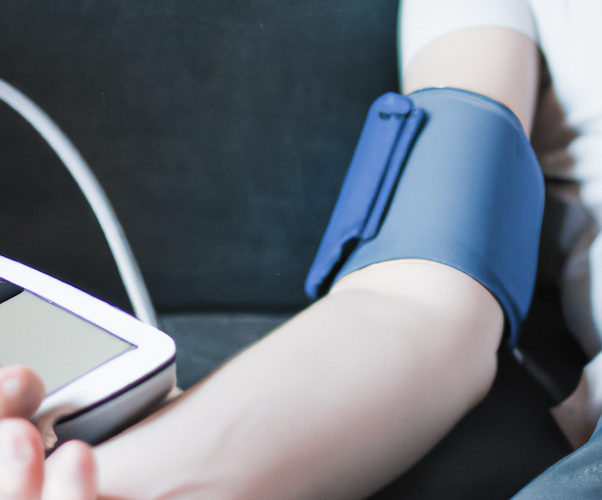Accurately measuring blood pressure at home can be achieved through the following steps:
- Sit Comfortably: Sit at a table or desk where you can easily place your arm flat. Rest for at least five minutes before taking a measurement to ensure that you are relaxed.
- Position Your Arm Correctly: Your arm should be resting flat on the table or desk, and it should be at the level of your heart. The cuff should be placed on your bare upper arm, not over clothing.
- Position The Monitor Correctly: If you’re using a wrist monitor, still make sure to position it at the level of your heart.
- Take Multiple Readings: Take at least two readings, spaced 1 to 2 minutes apart, and then record all the results. Some devices do this automatically.
- Regular Measurements: Take readings at the same time each day, such as morning and evening, or as your healthcare provider recommends.
- Avoid Certain Activities: Avoid smoking, caffeinated beverages, or exercise within 30 minutes before taking measurements, as these can cause a temporary increase in blood pressure.
- Keep a Record: Keep a record of your readings and show them to your healthcare provider at your next appointment. There are many mobile apps available that can help you track your readings.
Remember that blood pressure can fluctuate throughout the day, so don’t be alarmed if you see some variation in the readings.
According to the American Heart Association, blood pressure categories are:
- Normal: Less than 120 mm Hg systolic and less than 80 mm Hg diastolic.
- Elevated: 120-129 mm Hg systolic and less than 80 mm Hg diastolic.
- Hypertension Stage 1: 130-139 mm Hg systolic or 80-89 mm Hg diastolic.
- Hypertension Stage 2: 140 mm Hg or higher systolic or 90 mm Hg or higher diastolic.
- Hypertensive Crisis: Higher than 180 mm Hg systolic and/or higher than 120 mm Hg diastolic.
Blood pressure guidelines provided by different associations, such as the American College of Cardiology (ACC) and the American Heart Association (AHA), tend to diverge in terms of target levels and therapy starting points compared to those of the European Society of Cardiology (ESC) and the European Society of Hypertension (ESH).
So, how much should we lower blood pressure through interventions (medication, sleep apnea treatment, diet change, physical activity, smoking cessation) if hypertension is diagnosed? The 2018 ESC/ESH guidelines recommend a target blood pressure of less than 140/90 mm Hg for most patients under 65 with hypertension, and if therapy is well tolerated, less than 130/80 mm Hg.
When considering people under 65, it’s a valid question to ask: how much lower than 130/80 mm Hg should we aim? After all, a pressure of 100/70 mm Hg is also “lower” – but is it beneficial? To answer this succinctly: the latest ESC/ESH guidelines, taking into account nephrological experience/documents, do not recommend lowering systolic pressure below 120 mm Hg for the general population. The target level for diastolic pressure, however, is 70-79 mm Hg.
So, and this is important: for most of the population aged 18-65, the initial target level for therapy, based on office blood pressure measurement, is less than 140/90 mm Hg. With good tolerance of treatment, the aim should be for readings of 120-130/70-78 mm Hg.
For older individuals, the latest guidelines have also introduced simple changes: for all individuals aged over 65, the target blood pressure levels are 130-140/70-78 mm Hg.
Disclaimer
The information provided in this article is for general informational purposes only. The content presented on this website should be considered solely as opinions and personal experiences. Read more
